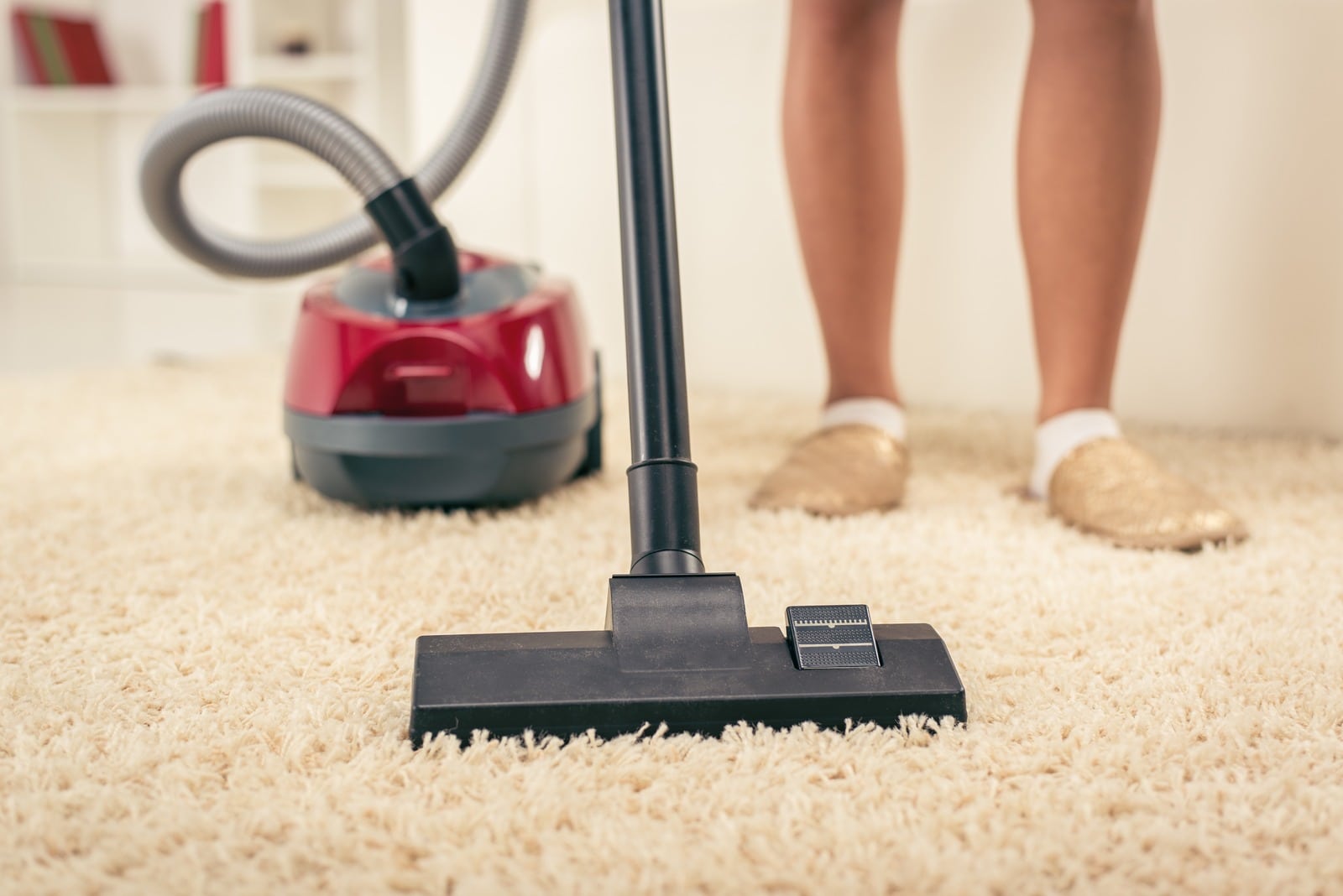Carpets and rugs can quickly attract dirt, debris, and stains. But your carpet can stay looking fresh and attractive for longer if you regularly deep clean it.
Routine cleaning is ideal on a daily or weekly basis for general dust, dirt, and hair. But deep cleaning is ideal on a weekly or monthly basis when there is staining or a greater build-up of debris from kids or pets.
Deep cleaning your carpets not only makes your home more aesthetically pleasing, but also helps to remove a variety of nasty bugs and germs from your living space, and can be a vital step if you have skin complaints or respiratory issues that are aggravated by dirt and dust.
You can deep clean your carpet using the steps below:
Step 1: Remove Loose Dirt
It is necessary to begin by removing visible dirt or debris. This is especially true for pet hair and human hair, but also mud, dust, and other grime. This step is essential so that any impurities are not being trodden into the fabric, or made worse when you add liquid.
First, thoroughly vacuum the carpet or rug, or if possible, shake the rug outdoors or into a trashcan. Try to avoid walking on the rug afterward until after the entire deep clean is complete, so that you can ensure it remains as clean as possible throughout the process.
Step 2: Pre-Treat Stains
Next, it is a good idea to pre-treat any severe stains or problem areas. Each stain may require a specific solution or cleaning product for the best results. For example, a tea stain might require a different approach than general discoloration or a bleach stain would.
All cleaning products should be double-checked to ensure they’re suitable for your specific fabric before use. If your rug or carpet is wool, for example, it may require a different product than synthetic fabric. Checking this in advance ensures that you are not making any stains or marks worse before you begin.
Cleaning products may also need some time to sit and soak into the stain before being washed away, so allow time for this and plan how not to disturb the stains by stepping on them. Also, be sure to follow the cleaning product’s instructions closely, so that you do not leave it in place for too long or too short a time.
Step 3: Wash With Water And Carpet Shampoo
Now it is time to wash the remainder of the carpet and remove any additional products from the stained areas.
Using a bucket of warm water, apply the carpet shampoo in stages, perhaps using a brush or mop specifically designed for cleaning carpets. My preference is to use a portable carpet shampooer/cleaner because they are much easier than scrubbing the carpet yourself.
Then, rinse and wipe the carpet or rug until the water begins running clean. You should also notice that the stains and dirt are becoming less visible — or removed entirely — and that the carpet is looking cleaner and brighter.
For removable rugs, this process can also be done outside, or even in a bathtub or shower for ease.
Bonus Tip: If you do not have carpet shampoo, you can also use natural solutions from around the home, such as by mixing baking soda with salt, sprinkling it into the fabric, then rubbing everything away with water.
One part distilled white vinegar to three parts water can also be spritzed onto stains in advance — but be sure to test this on a small section of the carpet first to check the color steadfastness!
Step 4: Towel Dry Or Air Dry
When your carpet has been washed, rinsed, and made to look sufficiently clean, you can begin the drying process. If you choose to remove excess moisture by hand, old/unwanted clothes or towels are ideal for this – simply rub them over the damp patches while taking care not to apply excessive force.
When the majority of the moisture has been removed or evaporated, you can leave the carpet to air dry, while being careful to walk on it as little as possible. Walking on the damp carpet not only means it is more likely to become dirty again, but it can leave indentations too.
Depending on the size of your carpet or rug, you can also dry it with a hairdryer, or by hanging it over a rack or radiator.
And Finally…
When cleaning your rug or carpet, it is always best to start with small quantities of both water and cleaning product, and to then increase the amount used if necessary.
By taking your time, using cleaning products that are suitable for the fabric of your carpet, and following a thorough yet gentle cleaning process, you will be left with a cleaner, more hygienic, and better-looking carpet – which will benefit both your health and your home!
